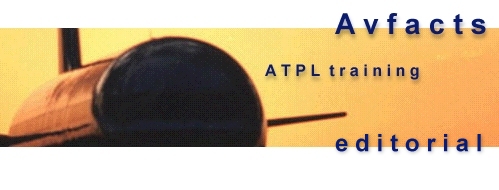




 |
 |
  |
 |
Aircraft Systems topic 3.
Engine Fire Protection Systems
General:Fires within the engine bay are thankfully rare, and usually more than one fault is required to start one.
The AFM emergency procedures section specifies the crew actions in the event of a fire. Obviously a fire in any part of the aircraft is hazardous, and will be announced to the crew be a bell aural warning, and a red warning light, or in the case of EICAS/ECAM equipped aircraft a warning message on the EICAS/ECAM screen, such as ‘FIRE ENG 1’.
Prevention
As far as is possible, any flammable fluids are isolated from the ‘hot end’ of the engine, with fuel and oil lines and pumps located on the ‘cool zone’ around the compressor. They will be separated from the hot end by a fire-proof bulkhead. Ventilation is required to ensure that flammable vapours are not allowed to accumulate and cause a fire hazard.
| Fuel and oil tubing is made from flame resistant or flame
proof materials, and is often double walled to prevent leakage if one pipe wall fails. Electrical wiring is guarded so that it cannot cause sparking, and the engine components are ‘bonded’ to ensure that all have the same electrical potential, thereby preventing arcing due to static electricity build-up. Drains are provided in the engine case to prevent flammable fluids from remaining in the engine area. Such fluids are dumped overboard into the atmosphere. Engine cooling: This is provided by drawing in air at the front of the engine, and distributing it around the engine, then venting it overboard. A pressure sensitive door in the engine cowl will prevent over-pressures from occurring within the engine casing. |
|
Fire detection
Usually achieved by two fire detector loops fitted with thermocouples which register any out of tolerance heat condition.
A thermocouple is simply a detector made of two dissimilar metals joined to form two junctions. As the temperature difference between the two junction becomes greater, an electro mechanical force (EMF) is produced in the circuit, which in turn activates the fire warnings. In addition each engine has two detector loops for engine overheat monitoring.
| For both fire detection and engine overheat conditions both
loops must register a fire or an overheat condition before a warning is activated in the
cockpit. A fire/overheat test switch is provided so that the crew can test the integrity
of the system before flight. In many modern aircraft the onset of a fire warning causes the fire handle and fuel shut-off switch to illuminate to further guide the crew to shutting down the correct engine. |
|
Engine fire extinguisher system
Before fire extinguishing agent can be admitted to the affected engine, the fuel and ignition supply must be shut off. This will be achieved automatically when the fire bottle discharge handle is pulled. Normally the fuel switch is turned off manually before the fire handle is pulled.There are at least two CO2 fire bottles provided, numbered 1 and 2, each of these can be directed to any engine. To send the contents of number 1 bottle to the affected engine, pull the handle and turn it to the left. Turn it to the right to discharge the number 2 bottle. When either bottle has been discharged, the EICAS/ECAM will display the fact with a message of ‘ENG BOTTLE 1 LOW’ (or 2) is displayed.
APU fire extinguisher system
The APU has it’s own separate extinguisher bottle. The APU will cut off it’s fuel supply, shut the ventilation doors and shut down automatically. The fire extinguisher agent is discharged automatically but will be withheld until the fuel is off and doors are closed. This assures that any air that might promote the fire is isolated. On the ground the aural warning horn located in the front wheel well will activate to warn the ground personnel the APU fire extinguisher has been discharged.
End of Fire Protection System texts.
Pilots are the "ULTIMATE PROFESSIONALS"... Strive to be one !
